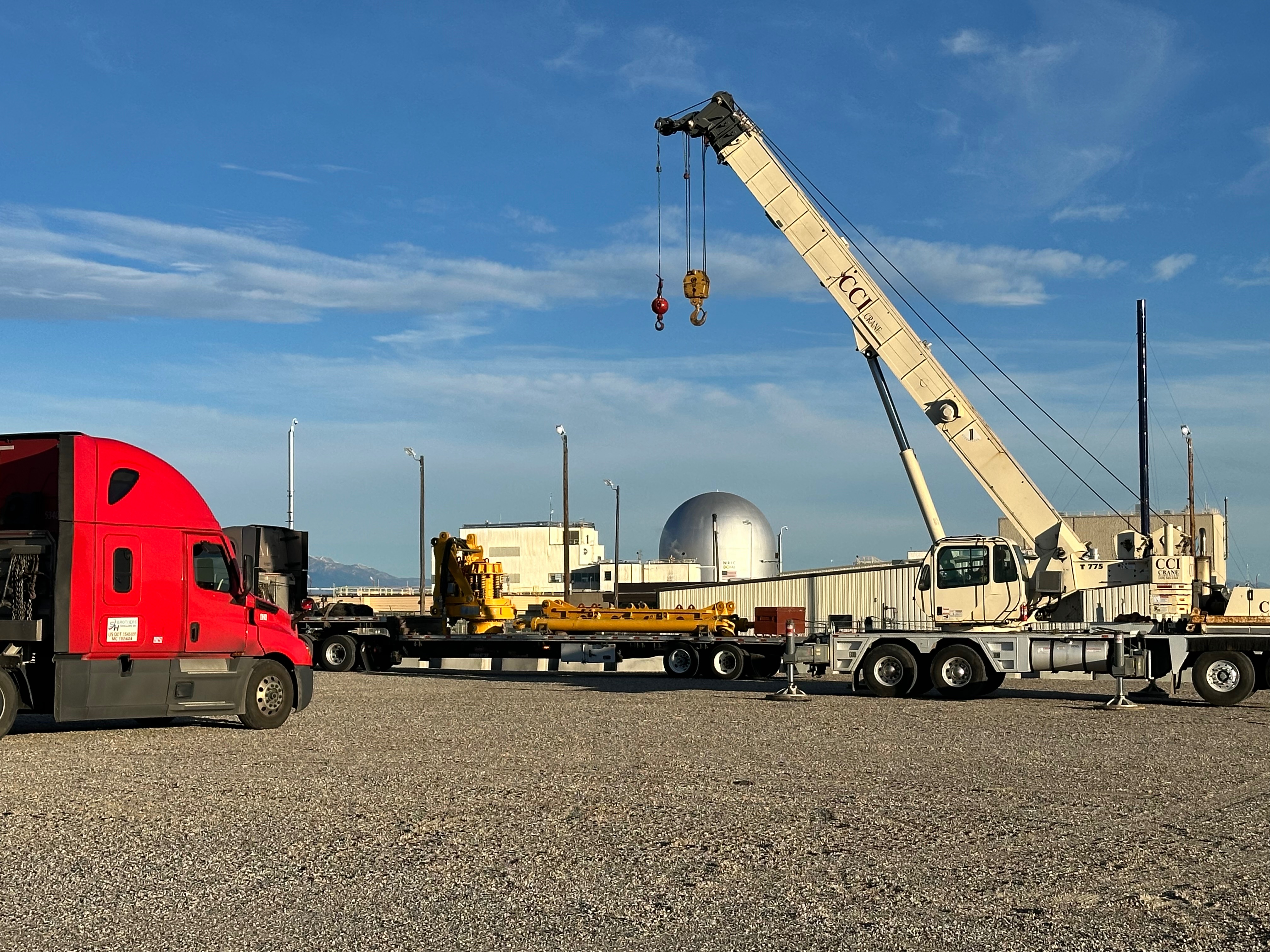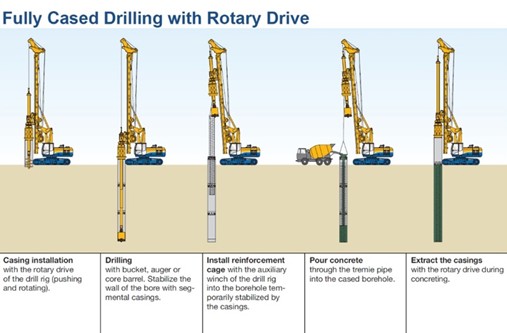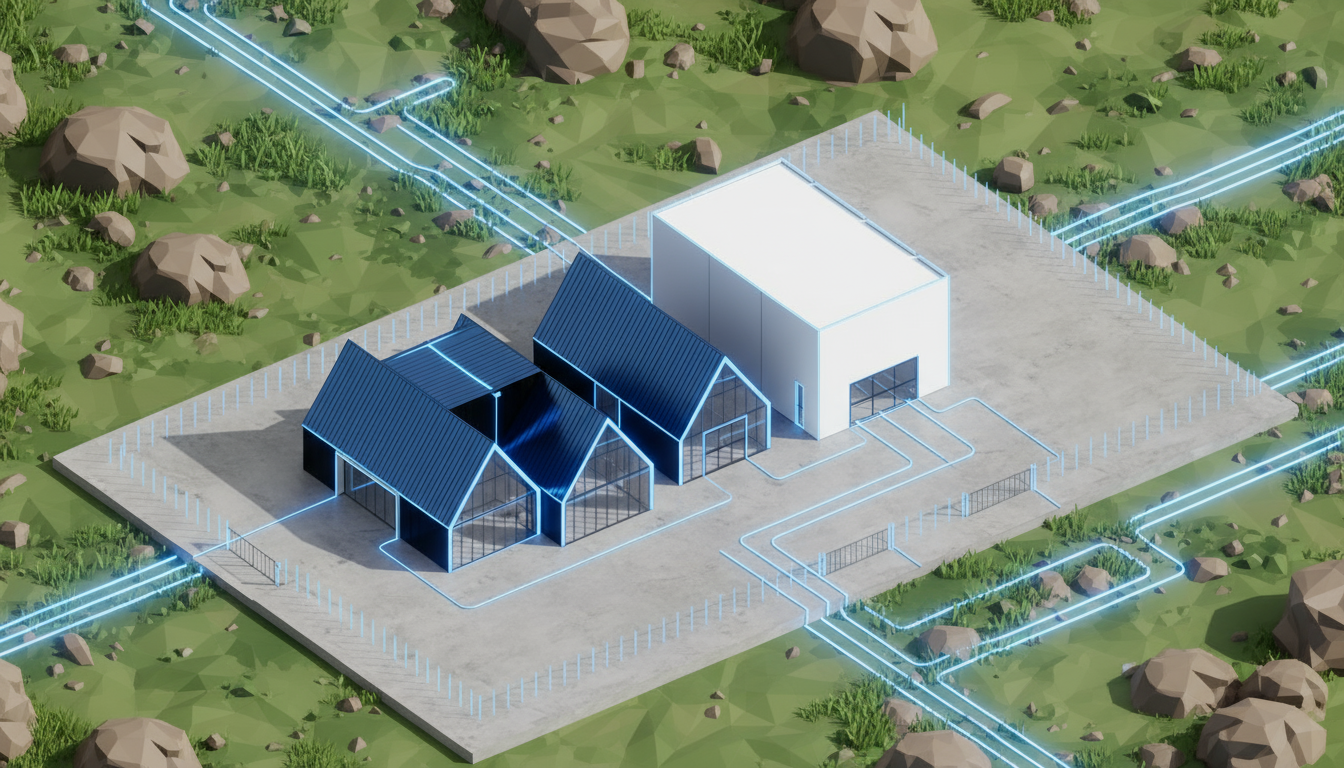Precision and Power: Why Aalo’s Vertical Drilling Wins in Rock Excavation

The Basalt Excavation Challenge
Building our Aalo‑X reactor means going 45 feet underground - no small task when solid basalt bedrock sits just 10 feet below the topsoil. Excavating through basalt is very challenging: the volcanic rock is extremely hard and usually demands heavy-duty removal techniques. We realized that conventional excavation methods would struggle at our site. Blasting and open-trenching are the usual playbook for rock, but here they raise serious safety, logistical, and environmental issues. Our team needed a solution that could dig deep through basalt while minimizing disruption.
To Blast or Not To Blast?
Blasting is a time-tested way to break rock, but it was practically off the table for Aalo‑X. Setting off explosives in basalt generates powerful shockwaves - vibrations that can rattle and damage nearby structures. In high-value sites like data centers and national labs, it is not the right solution because of these risks. Aalo‑X sits near critical lab facilities (and one day, possibly a data center next door). So blasting was a non-starter for us.
Trenching with backhoes - the other conventional approach - posed a different problem: scale. To excavate a hole 45 feet deep using an open cut, you typically need to slope the sides or bench the soil to prevent collapse. This requires a huge footprint. For example, a 45‑ft-deep excavation needs roughly a 100 × 80 ft open pit. In our case, digging a giant crater in hard rock would mean hundreds of truckloads of spoil being hauled off. Such a sprawling excavation just isn’t feasible near existing infrastructure or on a tight site. It’s also slow and labor-intensive - qualities we’re trying to avoid as we speed up nuclear projects.

Our Hard Rock Solution
Instead of blasting or broad earth-moving, we took a page from the playbooks of urban high-rise builders and deep mining projects: vertical drilling. This technique, often used for sinking shafts in dense city centers or even creating access to deep mines, lets us surgically bore through rock with minimal surface impact. The specific method we use involves constructing a secant pile shaft (though we just call it our vertical drilling approach). In simple terms, we create a ring of concrete columns that forms a continuous underground wall, then remove the rock inside that ring.
Here’s how it works: We start by drilling a series of primary holes in the ground around the perimeter of the intended excavation. These holes get filled with concrete to create the first set of piles. Next, we drill secondary holes in between the primary ones - the drill actually cuts partially into the adjacent concrete piles so that all the piles overlap and interlock. The result is a closed polygon (in our case, roughly circular) of reinforced concrete piles known as a secant pile wall. This wall is continuous and self-supporting, and the surrounding basalt and soil remains firmly in place. It’s a technique proven on deep foundations for skyscrapers, now being applied to a nuclear project.
Once the perimeter wall is in place, we turn our drills inside that ring. We drill out an array of cores in a checkerboard or honeycomb pattern through the basalt within the circle. These interior boreholes break up the rock’s integrity. Finally, we methodically break and excavate the remaining rock chunks from inside the walled shaft, working in a controlled, top-down manner. The secant wall keeps the excavation safe and dry (as a bonus, it acts as a groundwater barrier), while we haul out fractured basalt bit by bit. In essence, we’re drilling deep with minimal disruption - carving out a vertical shaft for the reactor without ever explosively shattering the ground.

Key Advantages of Aalo’s Vertical Drilling
We are confident that the vertical drilling approach is superior to blasting or trenching for deployment of XMR nuclear projects at data centers. Here’s why:
- Controlled, Precise Excavation: By drilling instead of blasting, we avoid uncontrolled energy release. There’s no risk of flying rock or shock damage. Everything is surgical and planned. Modern high-torque rigs can even bore through tough basalt and boulders directly, so we handle the hardest rock with precision rather than brute force. This control protects both our team and the surrounding facilities.
- Quieter & Safer for Neighbors: Rotary drilling is a relatively quiet, low-vibration process - worlds away from ear-splitting booms and blasting. Secant pile methods produce relatively little ground vibration, which keeps the peace with nearby operations. At INL (and for future customer sites like data centers), this means we can be good neighbors. There’s no need to schedule disruptive blast work for certain hours; the impact is so low that work can proceed as a normal construction site activity.
- Smaller Footprint: Our vertical drilling shrinks the excavation footprint. We only remove the material within the secant ring, essentially the volume of the reactor shaft itself. No need for massively sloped open pits. In contrast, a traditional open excavation would be several times wider at the top than at the bottom. By one estimate, going 45 feet deep with safe slopes could easily expand the hole to over 100 feet across. We eliminated that extra sprawl. Less excavation also means far fewer dump trucks - we’ve avoided generating mountains of spoil. In fact, the precise secant drilling approach inherently reduces excess volume and waste rock removal. This makes our site work cleaner and more efficient, with lower environmental impact from trucking and disposal.
- Faster Deployment: Speed is core to Aalo’s mission, and the drilling approach is predictable and fast. Based on subcontractor bids and our project planning, the vertical drilling method came out roughly 50% faster than the blasting + trenching alternative would have been. There’s no prolonged sequence of blast-permit delays, blast, then muck out, then shore up, etc. Drilling rigs work continuously and quickly. Plus, we can drill rain or shine - unlike blasting, which has to consider weather (like avoiding low cloud cover that can amplify noise). The faster we excavate, the sooner we can install reactor modules; this method shaves months off our civil construction timeline.
- Lower Cost: Efficiency translates to savings. By our estimates, the vertical drilling approach is delivering approximately a 40% cost reduction compared to a conventional excavation. Avoiding explosives and large earthmoving crews, optimizing the spoil removal, and accelerating the schedule all reduce costs. Fewer work-hours and less heavy machinery operation mean we’re spending less on labor and fuel. Importantly, we’re also dodging the indirect costs of blasting (like vibration monitoring or structural insurance for nearby facilities). All told, drilling was not just the technically superior choice, but the economical one as well.
- Scalable: Perhaps one of the biggest strategic advantages is how this drilling method aligns with Aalo’s factory-built, modular philosophy. Our vision is to replicate reactor pods like a product, in parallel, across multiple sites - much like data centers or wind farms are built. Vertical drilling makes excavation scalable: we can run multiple drill rigs in tandem, digging several identical shafts at once. There’s no huge open pit that forces a sequential one-by-one approach. Each 50 MWe Aalo pod could have its own drilled shaft going at the same time on a site, enabling a fleet of reactors to be installed on a rapid schedule. This parallelism means Aalo pod sites can be constructed in a highly predictable, assembly-line fashion. It matches the fast tempo of data center construction, where many identical units rise together. In short, vertical drilling turns a formerly messy civil job into a repeatable, modular operation - just like the rest of our reactor system.
Building Reactors for the Modern World
We view our vertical drilling approach as an embodiment of our company’s ethos. We choose precision over broadly applied force. By using a technique proven in modern construction, we ensure that the civil works for our nuclear deployments can match data center construction speeds. And, the techniques discussed here enable us to deploy with the same excavation techniques in a large envelope of potential site conditions. Advanced reactors can and must be compatible with the real world: by dramatically reducing their site impact, our nuclear power plants can co-exist more readily with businesses, data centers, and communities.
Just as our reactor design is modular and factory-produced, our excavation and installation strategy is designed to be repeatable and scalable.
This is how we’ll deploy pods as fast as customers need them while also being good neighbors. This strategy reflects Aalo's principles of speed, empathy, and scalability. By excavating the foundation of Aalo-X the right way, we’re building trust and proving that nuclear energy can power the modern world safely, quietly, whenever and wherever it's needed most.
Related updates






